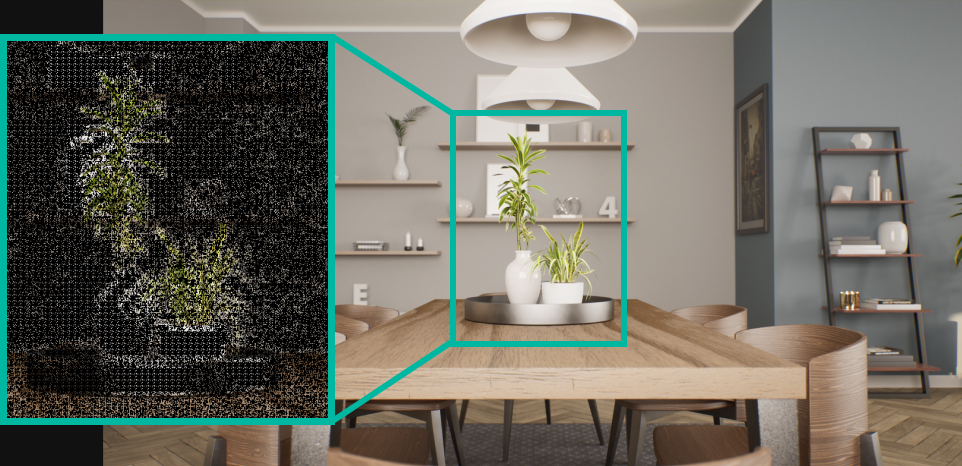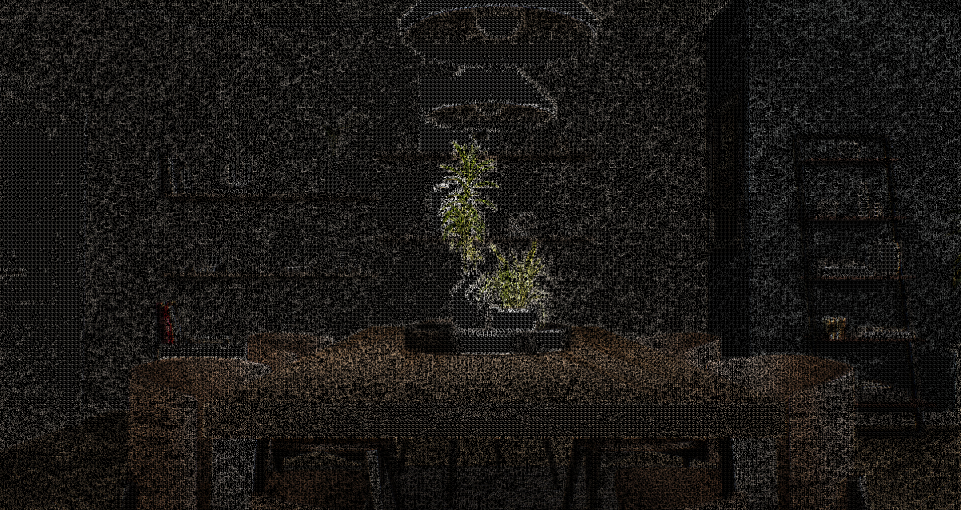Sparse modeling of the visual world for intelligent sensing and data representation
90%
Sparse rendering enables optimal sampling from sunlight to sensor and reduces the computational complexity in rendering up to 90%, while keeping the visual quality. Sparse rendering saves energy, time, and costs.
Sparsit is a research oriented company at the intersection between computer graphics, vision, and machine learning.
Our mission is to develop a sparse visual model of the world that enables extremely efficient and accurate measurement, synthesis, and analysis through sparse processing.

Sparse rendering is a next generation rendering algorithm for photo-realistic image synthesis and real-time rendering, that samples a small set of key points in a 3D scene and produces output images or image streams at up to 10x the speed without any compromises in quality.
Sparsit rendering suite includes image and video synthesis and analysis with applications and plugins at different stages in the rendering pipelines for both off-line (CPU) rendering such as product, architectural visualization, and VFX, as well as real-time (GPU) rendering for video-games, and interactive applications.
Our visual world model describes the world around us using a small set of sparse features that are learned according to a user-defined quality target.

Optimal sampling
Based on the sparse visual world model, we derive optimal sampling patterns and measurement strategies that can be used in a wide range of applications including computer graphics rendering and visualization, single- and multi-sensor image and video capture, radiance fields, or LiDAR simulation and measurement to name a few.

Sparse rendering
The goal of sparse rendering is to reduce the computational complexity in photo-realistic image synthesis for off-line and real-time applications.
Not all pixels are created equal: Based on the sparse visual model, sparse rendering intelligently predicts which pixels in the image contribute the most to the final picture and renders only those pixels, leading to a significant reduction in rendering time.


Up to10x
The computational savings (time and energy footprint) scales with the number of pixels in the sampling patterns, e.g, an average 10% sampling ratio leads to a 10x speedup in rendering.
Sparse rendering relies on machine learning to find the optimal number of pixel samples and pixel sampling patterns depending on the user-defined target quality setting (low, medium, or high).
Each pixel within the optimal sampling patterns is rendered as per usual by the renderer, and the reconstruction algorithm finalizes the image based on the sparse samples. The reconstruction quality always follows the target quality, no matter how complex the scene is.